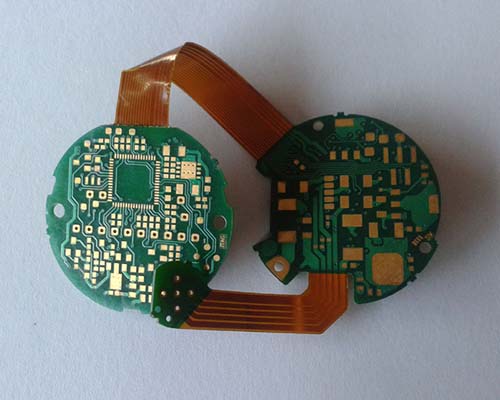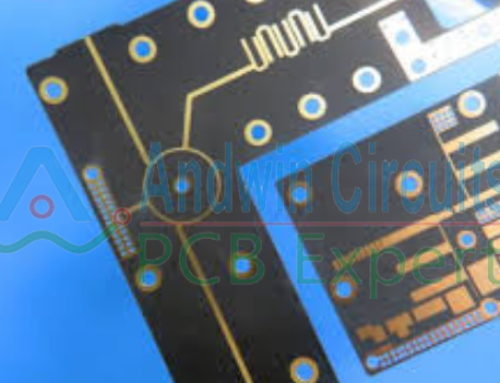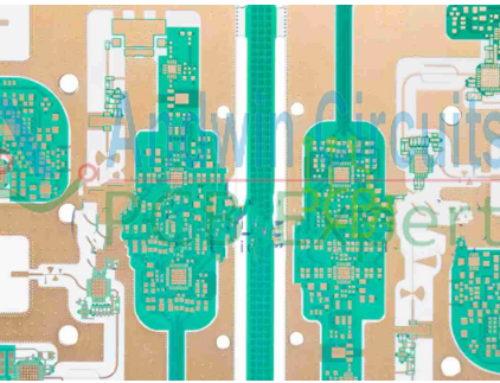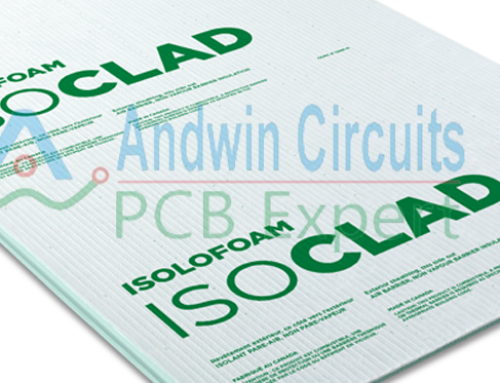Here is an example of a Flex PCB designed using Altium:
1. Start by creating a new Flex PCB project in Altium.
2. Define the board shape and size, and add any required cutouts or notches.
3. Add components to the board, including any connectors, ICs, and passive components.
4. Define the routing rules for the Flex PCB, including minimum trace width and spacing, and any required bend radius.
5. Route the Flex PCB traces using Altium’s interactive routing tools. Be sure to follow the defined routing rules to ensure proper signal integrity.
6. Add vias and other interconnects as needed to connect different layers of the Flex PCB.
7. Once the routing is complete, perform a design rule check (DRC) to ensure that the design meets all of the defined rules.
8. Generate the Gerber files and manufacturing documentation needed to produce the Flex PCB.
9. Send the files to a Flex PCB manufacturer for fabrication.
10. Once the Flex PCB is fabricated, assemble the components and test the board to ensure proper functionality.
This is just a basic example of the design process for a Flex PCB in Altium. The actual design process may vary depending on the specific requirements of the project.

flex pcb harness
A flexible printed circuit board (flex PCB) harness is a type of wiring harness that uses flexible PCBs instead of traditional wires and cables.
Flex PCBs are thin, lightweight, and flexible,
which makes them ideal for use in applications where space is limited or where the wiring needs to be routed around corners or other obstacles.
Flex PCB harnesses are commonly used in automotive, aerospace, and medical applications,
where reliability and durability are critical. They can be designed to meet specific requirements,
such as high-temperature resistance, moisture resistance, and electromagnetic interference (EMI) shielding.
Flex PCB harnesses offer several advantages over traditional wiring harnesses, including:
1. Space-saving: Flex PCBs can be designed to fit into tight spaces and can be bent or folded to fit around obstacles.
2. Weight reduction: Flex PCBs are lightweight, which can reduce the overall weight of the system.
3. Increased reliability: Flex PCBs are less prone to failure than traditional wiring harnesses, as there are no solder joints or connectors to come loose.
4. Easier assembly: Flex PCB harnesses can be designed to simplify the assembly process, reducing labor costs and improving efficiency.
Overall, flex PCB harnesses offer a reliable, cost-effective, and space-saving solution for wiring applications in a variety of industries.
the role of flex pcb harness
Flex PCB harnesses play an important role in electronic devices as they provide a flexible and reliable connection between different components. They are used to connect various electronic components such as sensors, switches, and displays, which require flexible connections due to their movement or placement in different positions.
Flex PCB harnesses are made of flexible materials such as polyimide or polyester, which allows them to bend and twist without breaking. They are also lightweight and compact, making them ideal for use in small electronic devices such as smartphones, tablets, and wearables.
Flex PCB harnesses offer several advantages over traditional rigid PCBs, including enhanced durability, improved signal integrity, and reduced space requirements. They also reduce the need for additional wiring and connectors, which can simplify the design and assembly process.
Overall, flex PCB harnesses are an essential component in modern electronic devices, providing a flexible and reliable connection between different components while reducing space requirements and improving overall performance.
Other PCB products, you may interesting














